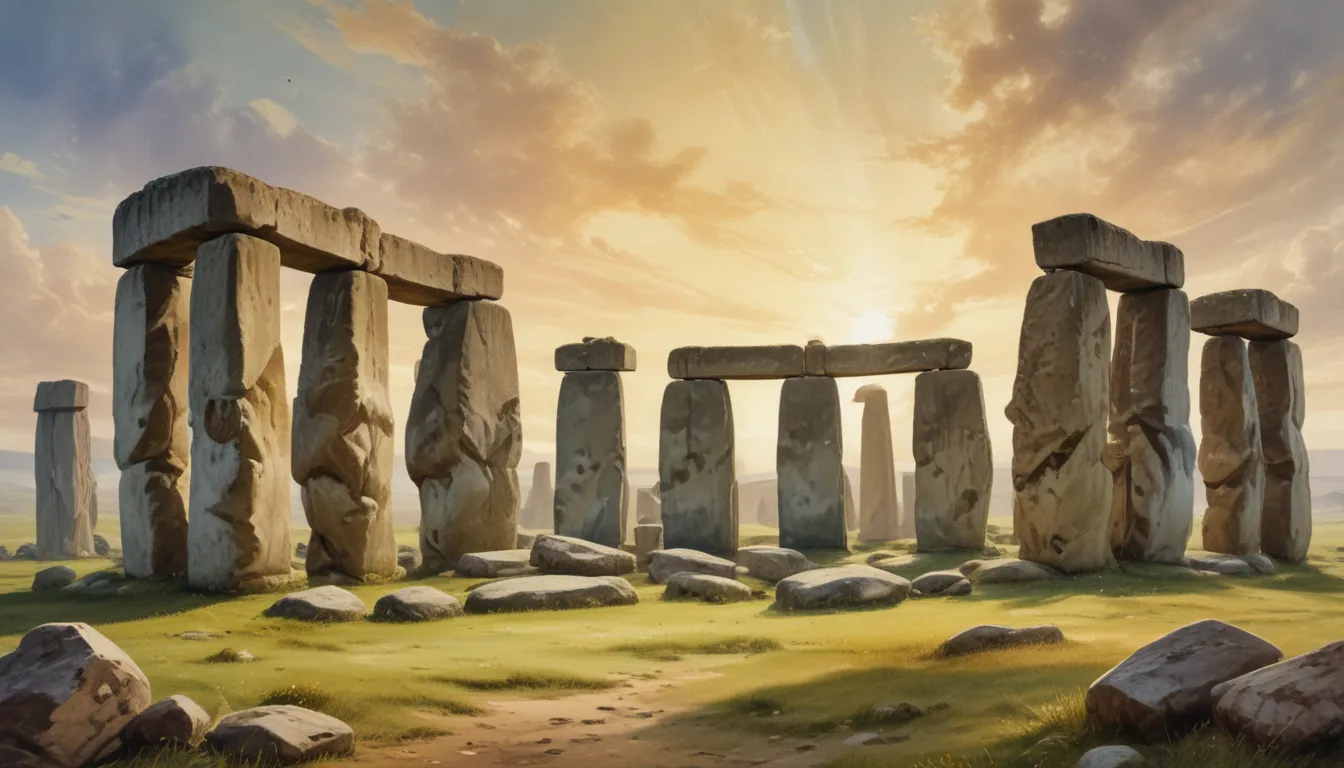The images in our articles are for illustrative purposes only and may not exactly match the content. They are intended to capture your interest and complement the text, not to replace it.
Welcome to the captivating world of Stonehenge, a timeless marvel that has intrigued generations with its ancient allure. Situated in Wiltshire, England, Stonehenge stands as a testament to human ingenuity and craftsmanship, attracting visitors from around the globe. In this article, we will uncover 20 fascinating facts about Stonehenge, delving into its construction, purpose, and significance. Join us on a journey through time as we explore the enigmatic secrets of this UNESCO World Heritage Site.
Unraveling the Enigma of Stonehenge
Stonehenge’s enigmatic origins continue to spark curiosity and wonder among researchers and visitors alike, prompting questions about its construction and purpose.
The Ancient Origins of Stonehenge
Dating back over 4,500 years to the late Neolithic period, Stonehenge stands as a testament to the skill and dedication of ancient civilizations, symbolizing the enduring nature of human achievement.
Marvels of Megalithic Architecture
Stonehenge’s iconic stone circles showcase awe-inspiring megalithic architecture, with each massive stone weighing several tons, highlighting the ingenuity of ancient engineering.
A Celestial Connection
The alignment of Stonehenge with the rising sun during the summer solstice hints at its potential astronomical significance, sparking theories about its use as a celestial calendar.
The Mystery of the Bluestones
Comprised of both Sarsen stones and Bluestones, Stonehenge’s origin of these smaller stones from Wales remains a subject of debate, adding intrigue to its complex construction process.
A Window into the Past
Stonehenge’s role in ancient burials and rituals provides a glimpse into the religious and ceremonial practices of the past, shedding light on the cultural significance of this historic site.
Guardian of Time and Space
Speculations about Stonehenge serving as an astronomical calendar highlight its potential function in tracking celestial events such as solstices, equinoxes, and eclipses, adding to its mystique.
A Cultural Landmark
As a UNESCO World Heritage Site, Stonehenge holds a revered status, recognizing its cultural significance and historical importance as a symbol of British heritage.
An Icon of History
Stonehenge stands as an enduring symbol of British history, representing the ancient civilizations that once thrived in the region and captivating the imagination of people worldwide.
Inspiring Creativity and Wonder
Throughout history, Stonehenge has inspired artists, writers, and poets, drawing upon its enigmatic aura to create captivating works of art, literature, and music.
Healing Legends and Lore
Legends of Stonehenge’s healing properties continue to attract visitors seeking spiritual and physical rejuvenation, adding a mystical element to its allure.
A Legacy of Evolution
Through multiple phases of construction and centuries of alterations, Stonehenge has evolved into the monument we see today, embodying the rich tapestry of historical periods.
Unraveling the Mysteries
Despite ongoing research, the purpose of Stonehenge remains a subject of speculation, with theories ranging from religious ceremonies to astronomical observations, fueling the debate.
Immersive Experiences at Stonehenge
The modern visitor center at Stonehenge offers interactive exhibitions that delve into the site’s rich history, providing visitors with a deeper understanding of its mysteries.
Solstice Spectacles
During the summer and winter solstices, a select few are granted access to the inner circle of Stonehenge, allowing them to witness the alignment with the sun and experience its celestial connection.
Unveiling Symbolism and Ley Lines
Beliefs in Stonehenge’s alignment with ley lines add a mystical dimension to its symbolism, intertwining natural and cultural landmarks in a web of intrigue.
Global Fascination
Stonehenge’s global appeal draws millions of visitors each year, who come to marvel at its grandeur and unravel the timeless secrets hidden within its ancient stones.
Pioneering Research
Archaeologists and researchers continue to explore Stonehenge, conducting studies and excavations to uncover more about its history and significance, pushing the boundaries of knowledge.
Safeguarding a Legacy
Efforts to preserve Stonehenge ensure that future generations can experience the wonder of this ancient monument, securing its legacy for centuries to come.
Unveiling the Enigmatic Stonehenge
In conclusion, Stonehenge stands as a remarkable testament to human creativity and perseverance, offering a window into the past and a source of inspiration for generations to come. Whether you are a history enthusiast, an archaeology buff, or simply drawn to its mystical allure, Stonehenge beckons you to explore its mysteries and uncover the wonders of our ancient past.
FAQs: Unveiling Stonehenge’s Secrets
- Age of Stonehenge:
-
Stonehenge is estimated to be over 5,000 years old, with construction beginning around 3100 BC and continuing for centuries.
-
Builders of Stonehenge:
-
The identity of Stonehenge’s builders remains a mystery, but it is believed to have been constructed by ancient societies, possibly the Neolithic people of Britain.
-
Purpose of Stonehenge:
-
The exact purpose of Stonehenge is still debated, with theories ranging from religious ceremonies to astronomical observations and burial practices.
-
Transporting the Stones:
-
The transportation of the massive stones of Stonehenge, some weighing up to 25 tons, remains a mystery, possibly involving human labor and wooden sledges.
-
Visiting Stonehenge:
-
Visitors cannot enter the stone circle at Stonehenge freely, but special access visits are available at certain times, providing a closer encounter with the monument.
-
Alignment with Solstices:
-
Stonehenge is aligned with the solstices, creating a mesmerizing spectacle during the summer and winter solstices as the sun rises in perfect alignment.
-
Visiting Regulations:
-
Stonehenge is a protected site managed by English Heritage, requiring visitors to book timed entry slots in advance to ensure a controlled and enjoyable experience.
-
UNESCO Heritage Site:
- Stonehenge was designated as a UNESCO World Heritage Site in 1986, recognizing its global significance and cultural value.
By unraveling the mysteries of Stonehenge, we gain a deeper appreciation for the wonders of our ancient past and the enduring legacy of this iconic monument. Join us on a journey of discovery as we explore the rich tapestry of history woven within the ancient stones of Stonehenge.






